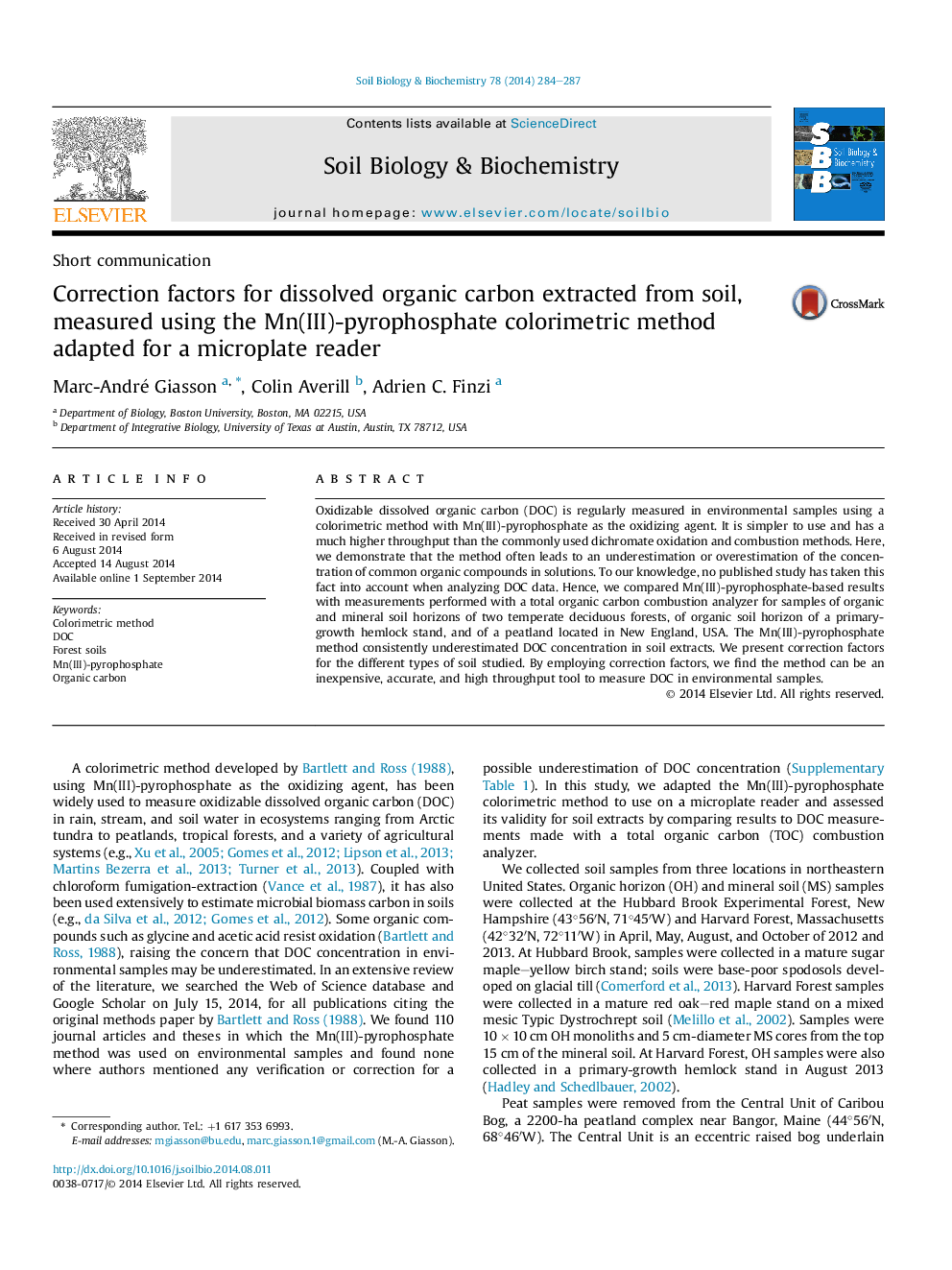| Article ID | Journal | Published Year | Pages | File Type |
|---|---|---|---|---|
| 2024594 | Soil Biology and Biochemistry | 2014 | 4 Pages |
•The Mn(III)-pyrophosphate method is an inexpensive, high throughput method measuring DOC.•We compared microplate results with Total Organic Carbon Combustion Analyzer measurements.•The Mn(III)-pyrophosphate method consistently underestimated C content in soil extracts.•We present correction factors for different types of soil from New England.•With proper calibration, the Mn(III)-pyrophosphate method is an acceptable tool for DOC analysis.
Oxidizable dissolved organic carbon (DOC) is regularly measured in environmental samples using a colorimetric method with Mn(III)-pyrophosphate as the oxidizing agent. It is simpler to use and has a much higher throughput than the commonly used dichromate oxidation and combustion methods. Here, we demonstrate that the method often leads to an underestimation or overestimation of the concentration of common organic compounds in solutions. To our knowledge, no published study has taken this fact into account when analyzing DOC data. Hence, we compared Mn(III)-pyrophosphate-based results with measurements performed with a total organic carbon combustion analyzer for samples of organic and mineral soil horizons of two temperate deciduous forests, of organic soil horizon of a primary-growth hemlock stand, and of a peatland located in New England, USA. The Mn(III)-pyrophosphate method consistently underestimated DOC concentration in soil extracts. We present correction factors for the different types of soil studied. By employing correction factors, we find the method can be an inexpensive, accurate, and high throughput tool to measure DOC in environmental samples.
